|
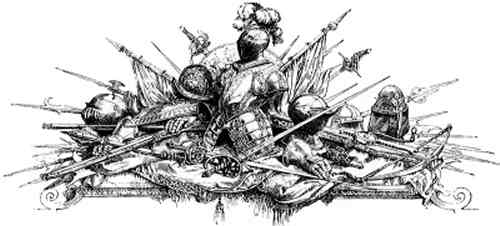
Herbert passed away late
in July of 2003 at the Isabel Hospice, QE2
Hospital at Welwyn Garden City in Hertsfordshire, shortly after being visited by family and
close friends.
Because of kind donations, his cancer treatment was successful
in extending his life for a year, enabling many good friends to visit and witness another side of a modern icon in small arms study.
From Bob Adams in
Albuquerque...
e-mail to: herb@adamsguns.com
Herb Woodend was custodian of the British Ministry of Defense
Pattern Room - first at Enfield Lock and later in Nottingham. Just after retiring, Herb was stricken with colon cancer. After botched
surgery (socialized medicine), he was basically told
to go home to die! A long-time Crown employee, awarded 'The Order of the British Empire', they were unable
(unwilling?) to do any more. Herb
sold many possessions and went to the Anderson Clinic
in Houston.
However, Herb paid his own medical bills (near
$200,000). A good friend to
shooters and collectors worldwide, many firearm books credit his
contributions. A confidant of many authors over the last generation,
his experience made a significant impact on the record we have today of British
(any many other) service arms and ammunition.
Bob Adams
Although it is more than a decade since Herb's
passing, this page it retained in his memory.
|
|
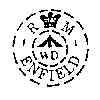
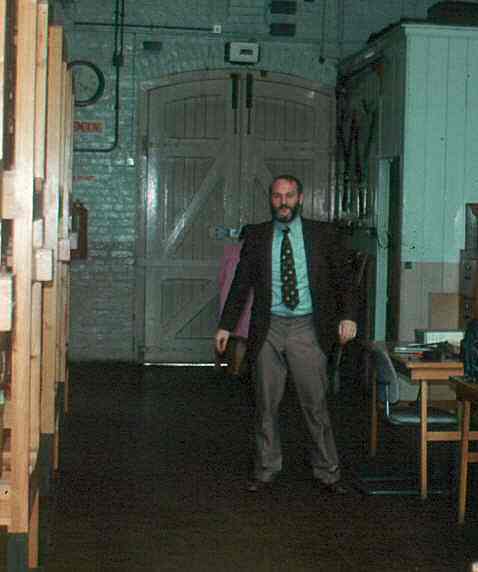
Herb outside his office at the Enfield R.S.A.F. Pattern Room in 1977
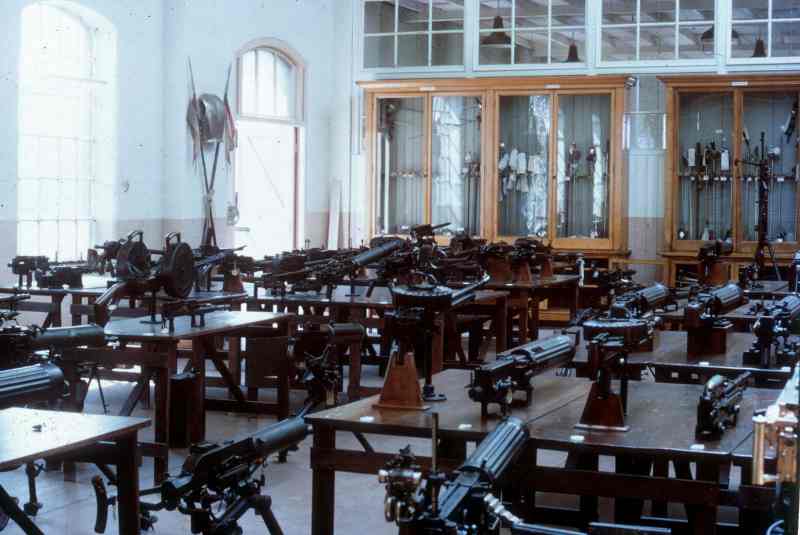
Royal Small Arms Factory Pattern Room, Enfield, 1977
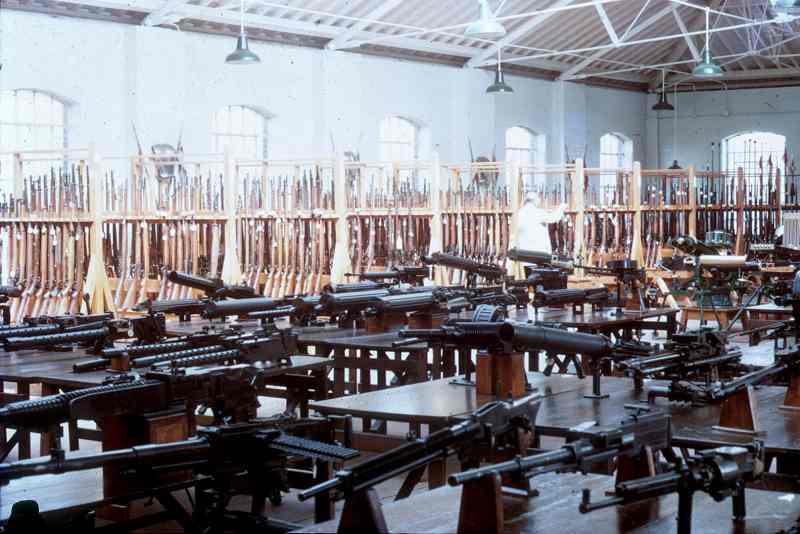
Royal Small Arms Factory Pattern Room, Enfield, 1977
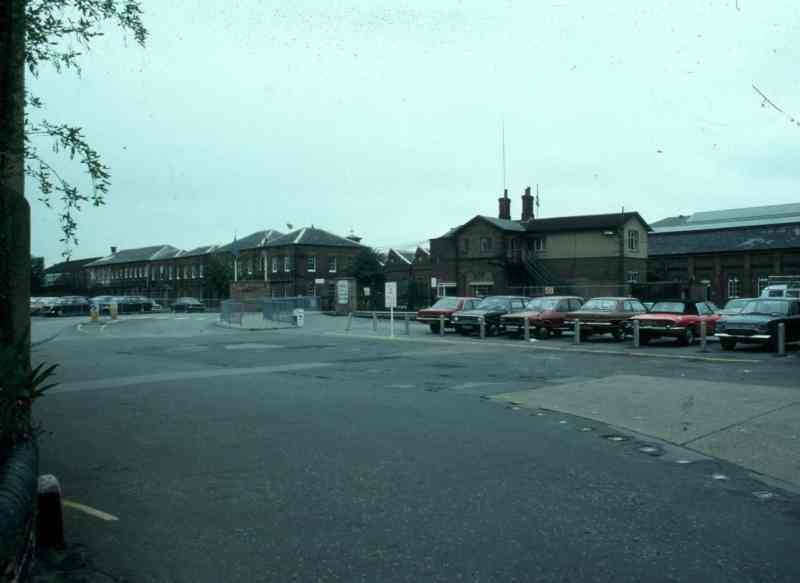
R.S.A.F. Pattern Room car park, Enfield, northern London, in 1977
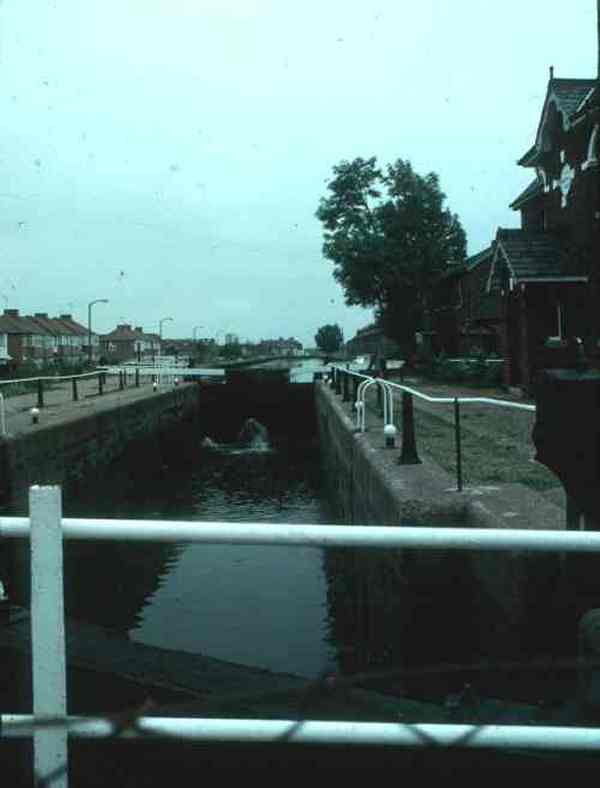
Enfield Lock, the barge canal by which the R.S.A.F. got its name
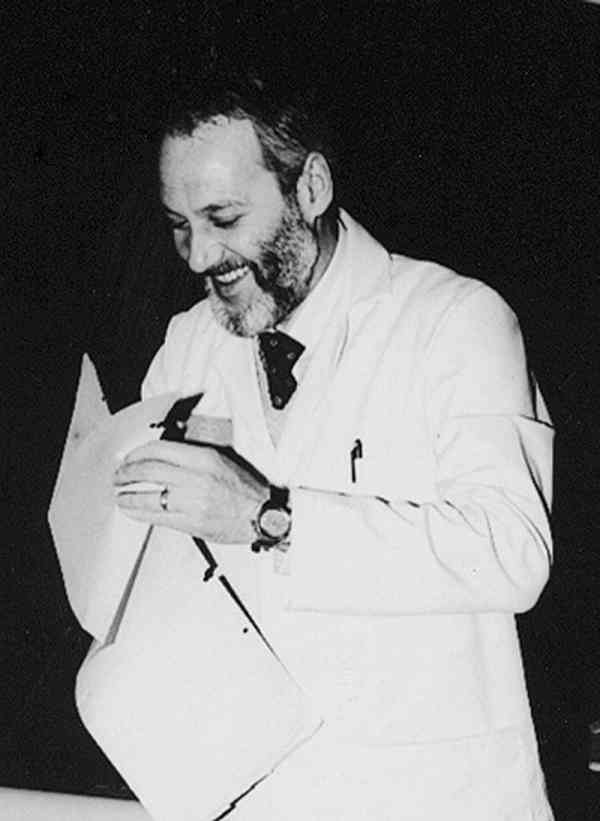
Herb in an untypical off-guard moment sorting government paperwork
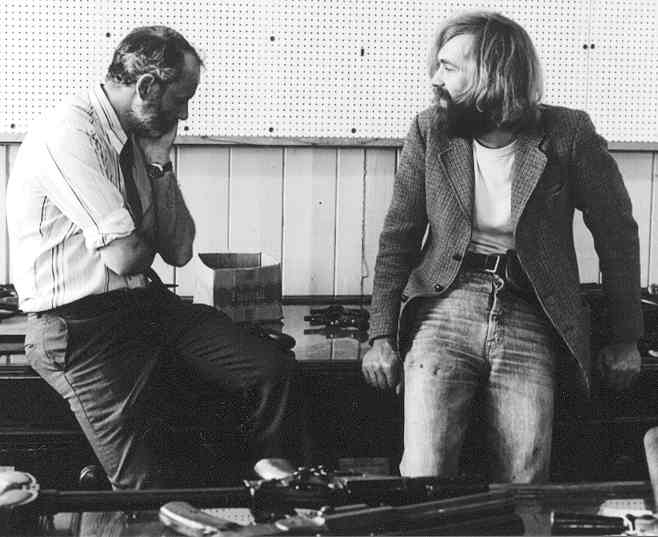
Herb and firearms dealer Jeremy Tenniswood ponder a trade for some more goodies
for the Pattern Room collection, 1980 at R.S.A.F. Enfield
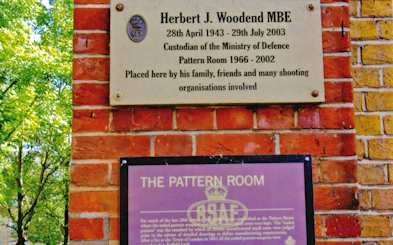
Memorial Plaque at Enfield housing
estate today
|
From Ian Skennerton...
My first
work with 'Herb' was in Spring 1977 when I visited the R.S.A.F. Pattern
Room at Enfield on the northern outskirts of London, in the course of
researching .577 Snider and .450 Martini-Henry arms.
An
introductory meeting with Herb at my 'digs' (rented room) at Wanstead London's
east end, was to make an appointment and go through the
required channels to visit the Pattern Room.
In
those days it was not easy to organise a visit. As a newly arrived visitor
from 'Down Under' with few established contacts in the system, it
was a rather intrepid encounter on my part. It was
only through mutual collector friends that the meeting was arranged.
As
you can well imagine, this mecca for all British firearms and edged weapons
collectors was high on the 'must see' list for such visitors to the Misty Isles.
As a repository for service and in-house Ministry of Defence arms for
evaluation, it was not easy for casual visitors to visit.
The Pattern Room then was used more by the Enfield Factory and British and NATO
armed forces as a library of guns from all over the world. After all, this was
where the sealed patterns were housed.
The key
to real knowledge is a good library of original records and Herb set about to
assemble, with old factory and War Office records as a base, relevant printed
and hand-written records of the Royal Small Arms Factory and relevant
institutions. This inevitably expanded into the best collection of records and
service manuals in Britain. Because Herb
knew what he was looking for. Similarly his avid pursuit for rifles, carbines,
bayonets and swords for the Pattern Room collection became almost an obsession.
The Pattern
Room was moved up to Nottingham when the new owner of the Royal Ordnance
Factory, British Aerospace, saw the value of the huge land holding of R.S.A.F.
Enfield and sold off the land for housing estates.
The
move up to Nottingham did not really suit Herb and while he over-nighted in
Nottingham, he returned to London each weekend. His arrival back at work on
Monday (or even Tuesday) largely depended upon the amount of traffic on the M1.
Yet
again, the factory land at Nottingham was deemed to be of more value as housing
estates so the Pattern Room was again under threat. This was after a few
apprehensive years when the Ministry of Defence and factory organization
argued over who was liable to pay rental of the Pattern Room buildings, and
the Pattern Room was likely to be closed.
This
was finally decided when the factory at Nottingham was closed as the Pattern
Room collection, one of the finest in the world, was in double jeopardy. There
were talks of prize pieces being given to other museums and the bulk of it being
destroyed. Given the firearms record of the sitting Labor British government, we
were all prepared for the worst anyway.
Then
as prayers were answered, it was officially announced that a new purpose-built
building would be established in the Leeds docklands adjacent to the Royal
Armouries to house the Pattern Room collection. The Pattern Room reference
library has already been moved to the Royal Armouries and is now available to
researchers again.
The
new establishment remains closed to the general public, but qualified students
and collectors may still be granted access to the Pattern Room collection for
morning or afternoon sessions. The old days when we could take down prized sealed
patterns and experimental prototypes off the rack to examine and study are gone
for most of us, but the pristine collection has at least been saved from
dispersion or destruction.
Only
time will tell if any of the initial restrictions to access are relaxed to permit
a wider audience, although we have noted some Pattern Room items on general
display in the Royal Armouries galleries.
Certainly,
the most comprehensive British military inventory in the world is largely due to decades of tireless work and devotion to
the collection of arms and records by one man, the custodian and curator, Herbert Woodend
MBE.
Bestowed
with one of the highest civilian awards that Great Britain offers, Member of the British
Empire, it was recognition for his contribution to this superb collection
of British service firearms and edged weapons. Herb was humble enough not to tell most of
us of his MBE! Or maybe it was in part due to his dogged Irish ancestry?
Thank-you
to those who donated to Herb's medical expenses and granted him more time with family and friends
in his final years. The new 'Lee-Enfield' book (Ian Skennerton) also
carries a dedication to Herbert Woodend on the title page.

|

